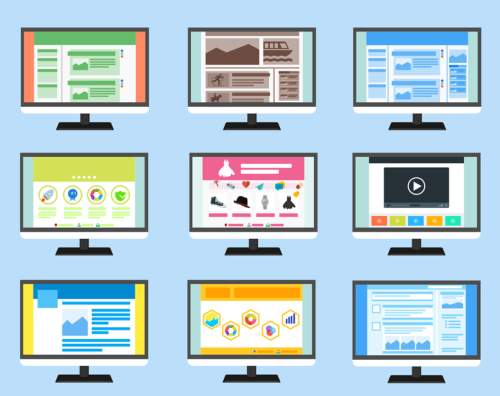In the digital world, consumers expect to find your business on the web—may it be to promote your product and services or to provide information about your business. It is also essential to capitalize on this kind of marketing approach so that you can better connect with your customers.

Today, anyone can easily create a website, regardless of your technical skills. With that in mind, here is a step-by-step guide on how to create a site.
Choose Your Platform
There are different website builders you can utilize. These include Wix, Weebly, WordPress, Squarespace, Drupal, or Joomla. Explore these platforms for you to be able to know which best fits your creativity and technical skills. Also, make sure to take note whether it is a paid or free website builder for your convenience.
Register Your Domain Name And Get Website Hosting
Before setting up your website, it is essential first to get a web hosting. It is a service which connects your website to the internet. It is used to store your content, website files, and images. This feature enables your site to be visible on the internet.

On the other hand, your domain name is also as important as your web hosting. You should make sure that your domain name will reflect your business name or easily show what your products and services are. You must first need to find an accredited registrar to be able to register your domain name. This step will require you to pay a minimal fee.
Install Your Chosen Platform
There are two ways to install your chosen platform—one-click installations or manual installations. If you have a hosting company such as Bluehost, you will be able to use the one-click installation found in the control panel. If you do not have this hosting company, a manual installation will do.
Pick A Website Template
The good thing with picking a website template is that website builders help you with this step. The best templates should be able to mirror what your business wants to offer on the table. You should take note what the perfect color scheme is and what your header and menu bar will look like. Branding is essential when establishing a website.
Customize Your Website
Website templates only provide a framework. However, it is important to personalize your site by customizing it. Customization can include the following:

- Changing the colors, fonts, and size of the buttons
- Adding new pages to have a more fluid flow of the website
- Embedding or linking your social media accounts
- Adding new elements such as videos, publicity materials, contact forms, and menus
Test Your Website Through Preview
Don’t be too excited about launching your website. It is necessary to make sure that everything is perfect before publishing and getting your website live. We listed down some of the questions you need to ask:
- Are there spelling or grammar errors found?
- Does your site fulfill the purpose you want it to achieve?
- Are all the dropdown menus working?
- Is the interface viewable on both mobile phone and desktop screens?
- Do the video add-ons load quickly?
- Are your embedded social media accounts linked properly?
- Is your account optimized for search engines?
Publish
Once everything has been done, you’re good to go! Before you click that “Publish” button, do not forget to market your website.

Creating a website is already essential in this digital world. Remember, anyone can make a site. You’ll never know: you might wind up creating something wonderful for your business.